Table of Contents:
- Introduction
- The Aztec Civilization
- The Mexican Aztec Pyramids
- Who Built the Pyramids in Mexico?
- El Tepozteco
- Xochicalco Pyramids
- Cuicuilco
- Teotihuacan
- Mexican Aztec Pyramids Architecture
- Conclusion
- Informative video
Introduction
Mexico is a country full of history, culture, and amazing old buildings. One of the most interesting parts of Mexico’s past is the Mexican Aztec Pyramids. These pyramids are not just big stones. They are places where people once lived, prayed, and worked. They show how clever and creative the ancient people of Mexico were. Many tourists and students come to Mexico to see these pyramids because they are very old and very beautiful.
The Mexican Aztec Pyramids are very different from other pyramids in the world. They are not smooth like the pyramids in Egypt. Instead, they have steps and flat tops. These flat tops were important for the people who built them. They used the top for many things, like meetings, celebrations, and ceremonies. The pyramids also show the skills of the builders. They used simple tools but made very strong and lasting buildings.
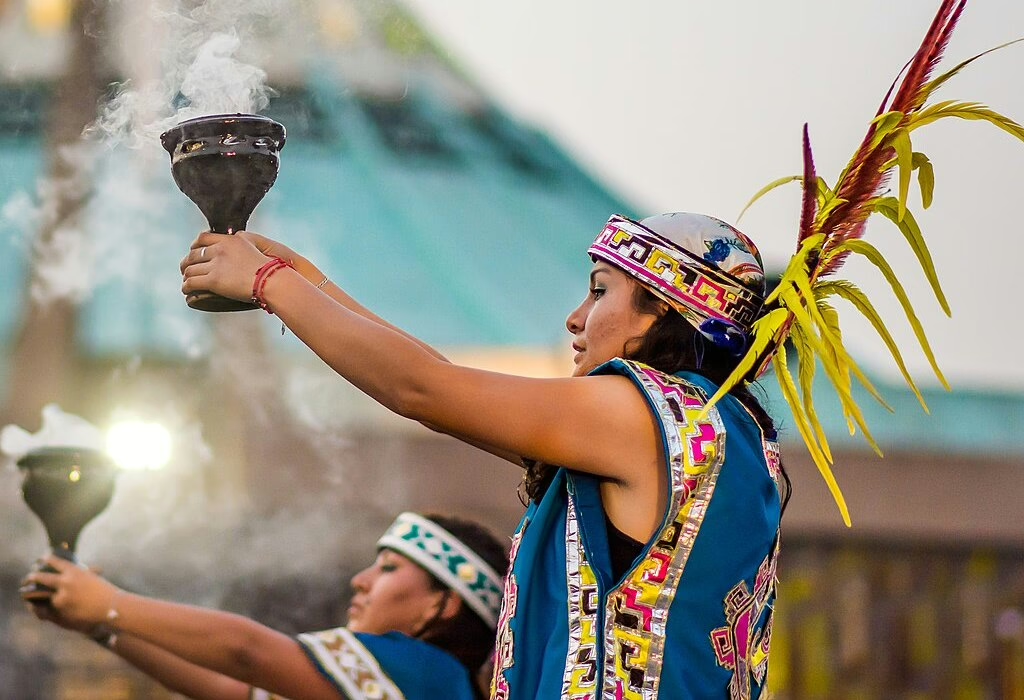
Not all of these pyramids belong to the Aztec culture, but many people wrongly attribute them to it. However, we will try to provide more detailed and historically accurate information about these pyramids, whose origins are still a great mystery.
In Mexico, the pyramids are in many places. Some are in big cities today. Others are in mountains, deserts, or forests. Each pyramid is different. Some are small, and some are very large. Some pyramids were made for the gods, and some were used for other purposes. For example, some pyramids were part of big towns where people lived. Other pyramids were special places where important events happened. Many pyramids have stairs, temples, and rooms. People who visit them can see the steps and imagine how people lived long ago.
In this article, you will learn about the Mexican Aztec Pyramids, their design, and why they are so important. You will discover places that are still standing after hundreds of years. You will also learn why these pyramids are special for Mexico and for the world. By reading this guide, you will understand the pyramids better and feel inspired to visit them one day.
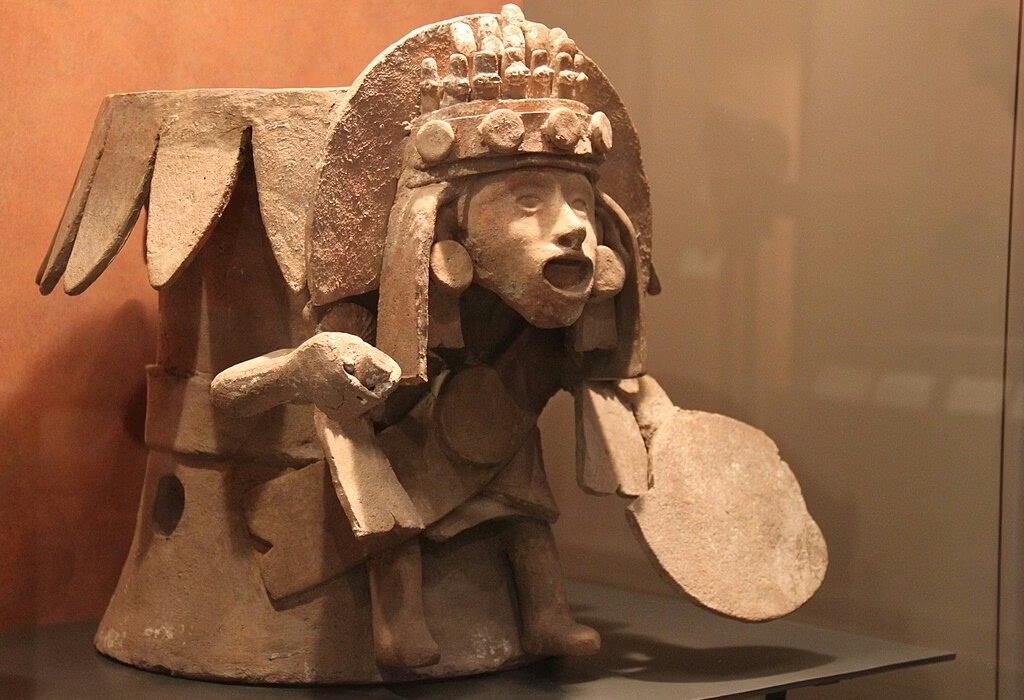
The Aztec Civilization
The Aztecs were people from northern Mexico who settled on Texcoco Lake in the Valley of Mexico around 1325. They were known as the Mexica, and they founded their capital, “Mexico-Tenochtitlan,” 400 years after the Mayan splendor. Outside the social scale were the slaves, who were mostly prisoners of war. They sacrificed people, often prisoners captured in war.

The Mexican Aztec Pyramids
These Aztec pyramids are built in steps, something that the Egyptians did not do. Therefore, the Aztec ones are more similar to the Mesopotamian ones. As we know, the Aztecs were polytheists. They worshiped many gods, each with a specific function. Certainly, the Aztecs built some of the most magnificent pyramids from the 14th to the 16th century. These pyramids were religiously motivated, and on top of them, they created their temples. To clarify, the temples were built to facilitate the Aztec religion. Building pyramid temples was an architectural duty for the Aztecs due to their religious importance.

Nowadays, some Aztec ruins are still untouched, which is one of the most incredible things about their temples. These pyramids had not only religious meanings but also government reasons. Aztec society had several class categories: first the king, then the priests, warriors, and nobles; below the merchants, and finally the workers. Outside the social scale were the slaves, who were mostly prisoners of war. They sacrificed people, often prisoners captured in war, at the top of the pyramids. This ritual has become one of the most famous parts of Aztec history.

Who Built the Pyramids in Mexico?
Mexico has archaeological zones as impressive as those in Egypt, Turkey, Jordan, and Italy. Nevertheless, Mexican pyramids and their surroundings convey a mystical atmosphere that you have to experience at least once in a lifetime. Most of the pyramids in Mexico were built by ancient Mesoamerican civilizations such as the Toltecs, the Tarascan, the Maya, the Aztecs, Olmec and the Totonac, and many others. Mexico is a place of legends and mysteries that make every part of its history full of mysticism and tradition. Without further ado, let’s go to some of the most important Mexican Pyramids you should know!
🔎 Check out our article and tour:
- The Mayan Food & The Ancient Secrets of its Gastronomy
- Discover the Best of South Mexico’s Paradise and Ancient Past (9 Days)

El Tepozteco
The El Tepozteco pyramid is located on top of a mountain in the state of Morelos. It was built by the people of Tepoztlan during the Late Postclassic period (around 1150-1521 A.D.). This stone structure was dedicated to Tepoztécatl, the god of pulque and fertility. Despite its relatively small size, with a height of about 9.5 meters, its location high on the mountain made it an important ceremonial center. Check out our Tepoztlan article.
Although the pyramid was not built by the Aztecs, it is often associated with them because the Aztecs dominated the region and shared a veneration for the deity to whom it was dedicated. The temple shows the cultural richness of the local civilizations that coexisted under the influence of the great empire. Its construction is an example of the religious architecture of that time.
Sadly, due to different earthquakes that occurred in September 2017, it had extreme damage that forced it to close its doors. The Tepozteco Pyramid shows spellings linked to many firmaments in pre-Hispanic cultures. In one of its stones, you will see engraved the name of Ahuizotl, the Aztec emperor who reigned between 1486 and 1502.
⛰️ Want to explore the Tepozteco with us? Join our tours:
- Las Estacas: Swim Among Colorful Fish and Visit Tepoztlan Town (Private / 14h)
- Mexico City: Explore Mexican Gardens and Charming Tepoztlan Town (Private / 12h)

Xochicalco Pyramids
The archaeological site of Xochicalco is located in the state of Morelos. Its name, of Nahuatl origin, translates to “in the house of flowers.” Xochicalco was an important fortified city that reached its peak between 650 and 900 A.D., after the collapse of Teotihuacan. Its strategic location on a hill made it a key center for trade and knowledge, serving as a meeting point for different cultures.
The most famous pyramid at the site is the Pyramid of the Feathered Serpent, which stands about 10 meters tall. Its walls are decorated with carvings that show artistic influences from various cultures, such as the Maya and the Teotihuacan people. The combination of these styles in its architecture shows that the city was a place of great cultural and intellectual exchange in the region.
☀️ Visit Xochicalco and other Cuernavaca wonders on our tours:
- Cuernavaca: Visit UNESCO Xochicalco and Admire Diego Rivera Murals (Private / 12h)
- Taxco: Know the Eternal Spring City and Charming Taxco Town (Private / 9.5h)
- Unearth the Gems of the Eternal Spring State (4 Days)
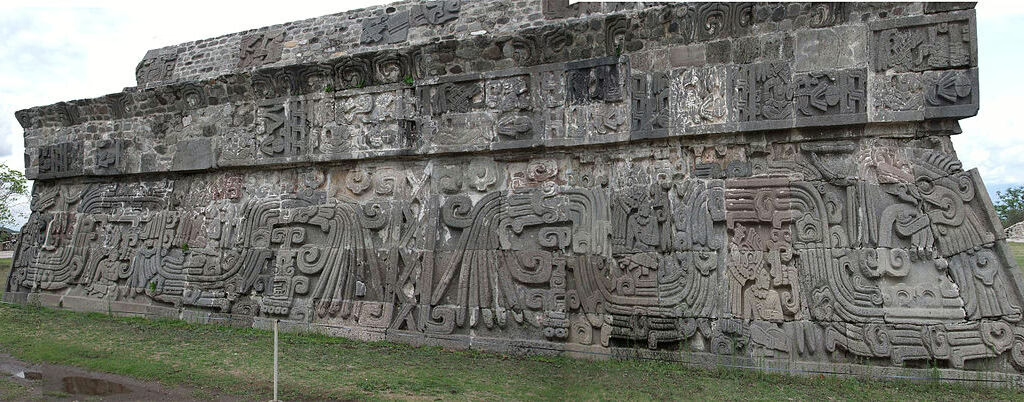
Cuicuilco
Cuicuilco is one of the oldest and most significant archaeological sites in Mesoamerica, located in the south of Mexico City. It differs from many other pyramids due to its circular shape. Its construction is estimated to have begun as early as 800 B.C., making it a ceremonial center that flourished long before Teotihuacan. The base of the pyramid has a diameter of about 135 meters and its height is about 25 meters.
A large part of the pyramid is buried under a layer of volcanic lava, the result of the eruption of the Xitle volcano between 150 and 200 A.D. This eruption caused the decline of Cuicuilco, which allowed Teotihuacan to grow and become the center of power in the region. The pyramid represents a civilization that existed thousands of years before the Aztecs.
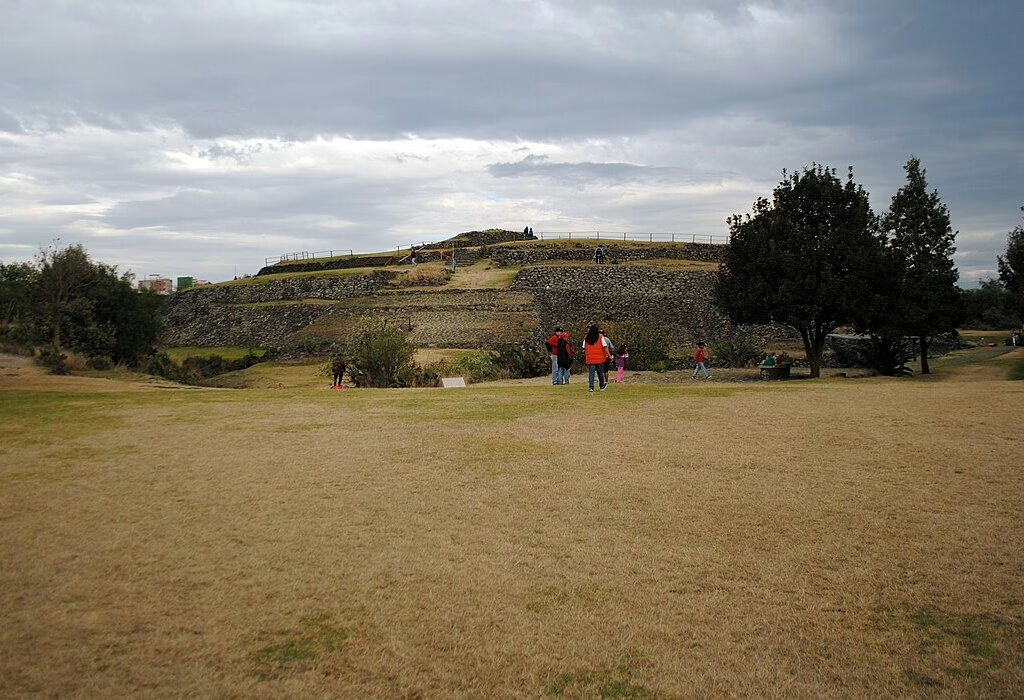
Teotihuacan
Teotihuacan was an ancient Mesoamerican city located in the Valley of Mexico, flourishing from roughly 100 BCE to 550 CE. Its name, which means “the place where the gods were created,” was given to it by the Aztecs who found it in ruins centuries later. At its peak, Teotihuacan was one of the largest and most influential urban centers in the Americas, with a population estimated to be over 100,000. The city’s inhabitants, whose identity remains a mystery to historians, were renowned for their multi-family residential compounds, murals, and sophisticated urban planning. Its vast influence is evident in the spread of its architectural style and cultural motifs throughout Mesoamerica, indicating a powerful network of trade and political control.
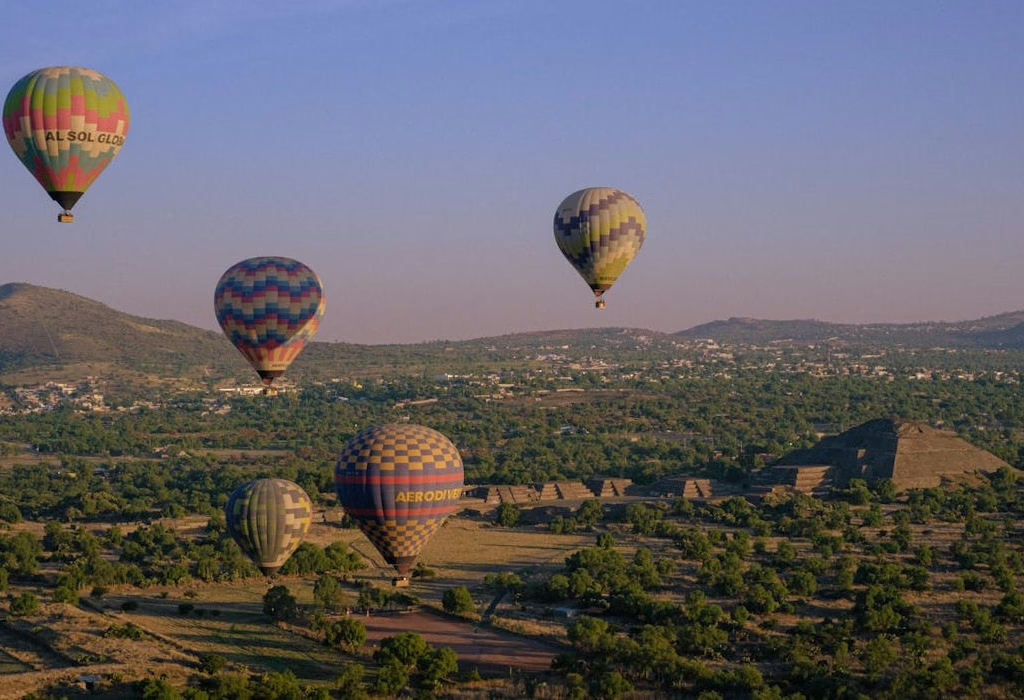
The most iconic features of Teotihuacan are its monumental pyramids and the central Avenue of the Dead.
The Pyramid of the Sun, one of the largest pyramids in the world, was built around 200 CE and served as the city’s main ceremonial center. The Pyramid of the Moon, located at the northern end of the avenue, was used for rituals and burial offerings. The Avenue of the Dead, a 2.5-kilometer-long thoroughfare, connected these pyramids with the Citadel, an enormous plaza containing the Temple of the Feathered Serpent. These structures were not built by the Aztecs; they were already ancient and mysterious to the Aztecs when they arrived in the area. Archaeological evidence suggests the Teotihuacanos were a highly organized society with a powerful religious and political elite.
The sudden and dramatic collapse of Teotihuacan around 550 CE remains one of archaeology’s greatest mysteries. Theories range from internal social unrest and class conflict to a catastrophic environmental event, such as a prolonged drought. While the city was largely abandoned, it was never forgotten. The Aztecs revered Teotihuacan, incorporating its monumental remains into their own religious and historical narratives, though they had no direct role in its construction. Today, Teotihuacan is a UNESCO World Heritage site and a testament to the advanced architectural and cultural achievements of a civilization whose name and origins are lost to time, but whose legacy profoundly shaped the course of Mesoamerican history.
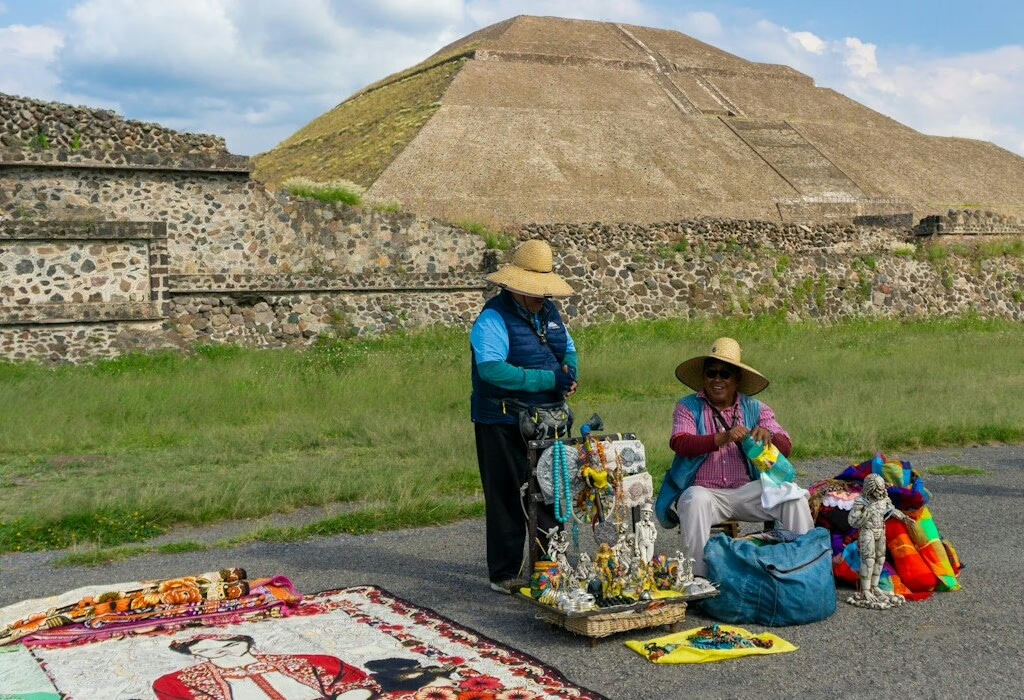
🌒 Discover the ancient secrets of Teotihuacan by joining our tours:
- Incredible Pyramids in Teotihuacan, Magic Town, and UNESCO Site (9 h)
- Admire Ancient Mexican Ruins and Architecture (10h)
- Teotihuacan Plus Amazing Chapultepec Castle and Museum (Private / 9h)
- Explore Stunning Pyramids around Mexico City (6 h)
- Visit Ancient Pyramids and Craft a Colorful Piñata (Private / 8h)
- ATV Tour in Teotihuacan: a Fun Archaeology Adventure on Wheels (8 h)
- Experience An Ancient Ceremony (8h)
- Enjoy a Total Private Tour with Breakfast in Teotihuacan (5h)
- Fly in a Private Tour Above the Ancient Pyramids Plus Tour (8h)
- Hot Air Balloon Experience: Plus Guide and Driver Included (Group/ 9 h)

Mexican Aztec Pyramids Architecture
Talking about their architecture is talking about the Mexican Aztec Pyramids, a fundamental part of their heritage and legacy. Uniquely, the development of Aztec architecture was based on the interests of the State, fulfilling a political-religious function. One of the characteristics of Aztec architecture is its marked sense of order and symmetry, similar to other cultures. Aztec ruins were an art expression for ancient Mexican ancestors.
The best way to describe Aztec architecture is as monumental. Its purpose was to manifest power while adhering to strong religious beliefs. This is evident in the design of its temples, shrines, palaces, and houses.
Strong infrastructure and resources were an important part of the Aztecs. All of this was to build large buildings that met the needs of their inhabitants. One of the greatest architectural examples is Tenochtitlan, what we know today as Mexico City. Tenochtitlan was a synonym for Aztec power and was home to some of their main temples. As the Aztecs didn’t build all of these archeological zones, they certainly had a huge influence on them.

🗺️ Learn more about Tenochtitlan and visit ancient wonders by joining our tours:
- Tour Mexican Ancient Places Virtually
- Explore the Great Mexican Culture Virtually
- Teotihuacan: Admire World Famous Ruins and Explore Historic Center (9 h)
- Personalize Your Experience in Mexico City (6h)
- Walk the Iconic Historic Center of Mexico City (3h)
- Customize a Guide and Driver in Mexico City (6h)
Conclusion
The Mexican Aztec Pyramids are not just stones. They are also stories. Each pyramid tells a story about the people who built it. The builders wanted to show respect for nature, the sun, the stars, and the earth. They used the shape of the pyramid to connect with the sky. They also built the pyramids to show power and organization. Leaders, priests, and workers worked together to make these pyramids. This teamwork helped their towns grow and stay strong.
Many pyramids have decorations and carvings. Some carvings show animals, people, or gods. Other carvings show patterns or symbols. These symbols were very important. They helped people understand the world and their beliefs. The art on the pyramids also shows that the builders loved beauty. Even after hundreds of years, these decorations can still be seen. Visitors can look at the stones and see the skill and care of the people who made them.
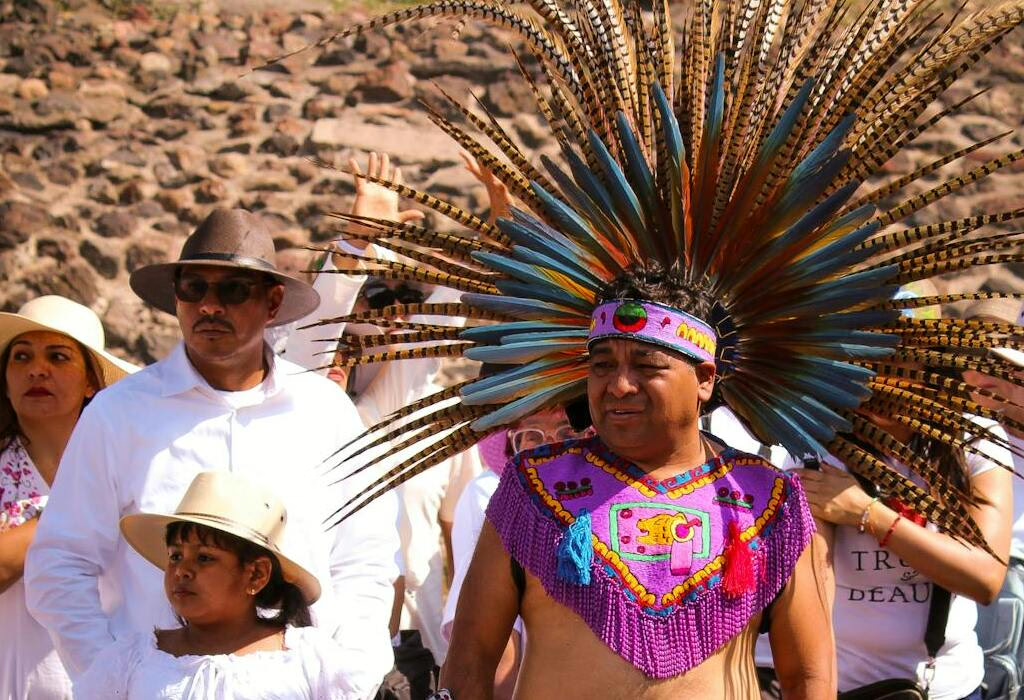
Visiting the Mexican Aztec Pyramids is like traveling back in time.
When you walk around a pyramid, you can feel how old it is. You can see the views from the top, the wide spaces, and the paths that people used long ago. Some pyramids are easy to climb, and some are more difficult. But all of them give travelers a chance to learn and enjoy. People can take pictures, read signs, and listen to guides to understand more about the history.
The pyramids are also a part of Mexico’s nature. Many pyramids are near rivers, hills, or forests. Birds, plants, and small animals live near the pyramids today. This makes visiting even more interesting. You can see both history and nature at the same time. For many travelers, this is a very special experience. So now you know, if you want a historical and cultural experience, you have to visit these pyramids in Mexico. Believe us, it does not matter if they are big or small, their history will fascinate you and make you want to learn more about Mexico’s past and legacy. What are you waiting for to start your adventure?
